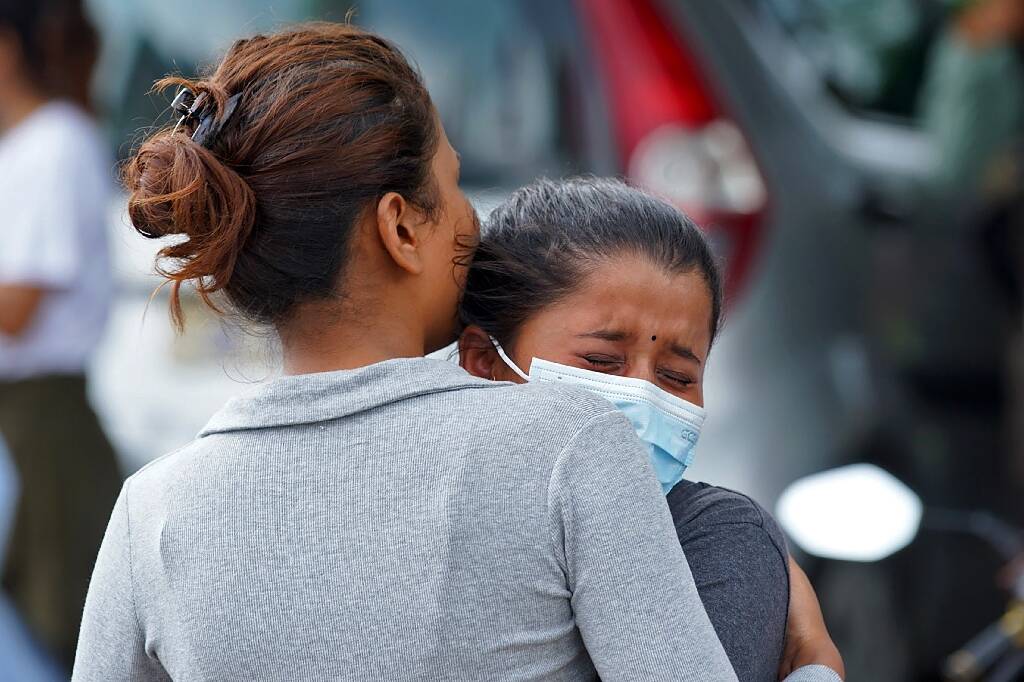“A rescue team has located the wreckage of the plane and shared a photo. Other teams are going there to get more details”said the spokesman of the Nepalese army, Narayan Silwal.
A photo shared by Mr Silwal on Twitter shows plane wreckage strewn across the side of a mountain.
The registration number 9N-AET is clearly visible on what appeared to be a piece of fender.
Search operations resumed Monday morning after being interrupted at nightfall on Sunday.
The aircraft had 19 passengers – including two Germans, four Indians and ten Nepalese – as well as three crew members.
Mr Silwal said the crash site was in an area called Sanosware in Thasang, Mustang region.
Before the discovery of the wreckage, Dev Raj Subedi, spokesman for Pokhara airport, told AFP that helicopters and soldiers on the ground had focused their search on Monday morning on a potential site.
« Search operations have resumed (…) There has been no significant improvement in the weather. Two helicopters have flown over this area but they have not yet been able to land »did he declare.
Mr Subedi said the search tracked GPS, mobile and satellite signals to the crash site.
The twin-engine Twin Otter had taken off from the city of Pokhara (central-western Nepal) at 09:55 (04:10 GMT) before losing radio contact.
Region difficult to access
Jomsom, known as a starting point for trekkers in the Himalayas, is a 20-minute flight from Pokhara, the country’s second largest city, 200 km west of the capital Kathmandu.
Rescuers explored, without success, throughout the day on Sunday this very difficult to access mountainous region in western Nepal, on foot and by helicopter.
Tara Air is a subsidiary of Yeti Airlines, a private domestic airline serving many remote areas of Nepal.
Nepalese aviation has boomed in recent years, ferrying tourists, walkers and mountaineers, as well as cargo, to remote and hard-to-reach places by road.
Nepal, a poor country in the Himalayas, has a poor aviation safety record due to insufficient pilot training and maintenance.
The European Union has banned all Nepalese airlines from accessing its airspace for security reasons.
The country also has some of the most dangerous slopes in the world, located among snow-capped peaks.
In March 2018, a plane belonging to the Bangladeshi company US-Bangla Airlines crashed near Kathmandu airport, killing 51 people.
The following year, three people died when a plane failed to take off and hit two helicopters.
The accident occurred at Lukla airport, gateway to Everest, which has the reputation of being one of the airports in the world where it is the most complicated to land and take off.
The deadliest accident dates back to 1992: 167 people were killed on board a Pakistan International Airlines flight near Kathmandu airport.
Two months earlier, a Thai Airways plane crashed in the same area, killing 113 people.
In May, Nepal’s second international airport opened in Bhairahawa, allowing pilgrims from all over Asia to travel to the Buddha’s birthplace in nearby Lumbini.
This project, at a cost of 76 million dollars, should make it possible to offload the international airport of Kathmandu.

